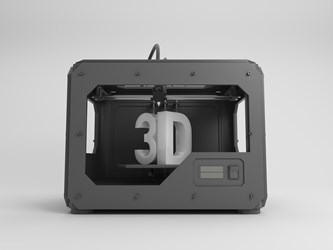3D Bio Printing Used To Regenerate Nerve Cells

By Christine Kern, contributing writer

Researchers are using bio scaffolding to help rebuild nerve tissue.
3D bio printing is already used in a number of bio printing applications from 3D printed skin to 3D printed thyroids. Now the technology will soon be used for organ transplants.
Researchers at Michigan Technological University are in the process of developing bio links, or printable tissue, using a 3D bio printer in order to make synthesized nerve tissue that could help regenerate damaged nerves in patients with spinal cord injuries.
The project is led by Tolou Shokuhfar, who directs the In-Situ Nanomedicine and Nanoelectronics Laboratory at Michigan Tech and is an adjunct assistant professor in the Bioengineering Department and the College of Dentistry at the University of Illinois at Chicago. Shokuhfar collaborates with Reza Shahbazian-Yassar, the Richard and Elizabeth Henes Associate Professor in the Department of Mechanical Engineering-Engineering Mechanics at Michigan Tech, whose background was crucial to inspiring the new 3D printing research.
“Cellulose nanocrystals with extremely good mechanical properties are highly desirable for bio printing of scaffolds that can be used for live tissues,” Shahbazian-Yassar explained. “We wanted to target a big issue. We are born with all the nerve cells we’ll ever have, and damaged nerves don’t heal very well.”
Thus, the need for regenerative nerve research.
The researchers have figured out how to integrate graphene to use as an electrical conductor to promote nerve activity – with plans to allow cells grown outside of the body in this matrix to be transplanted back into a patient’s body. “Graphene is a wonder material,” Shahbazian-Yassar said. “And it has very good electrical conductivity properties.” The research uses cellulose nanocrystals to help build out the bio scaffolding – which can be produced with a machine the size of a desktop printer, according to the university.
This is just one of the materials they are studying for use in regenerative 3D printing, hoping to reach ambitions of perhaps being to further help patients with spinal cord injuries one day. The bio printing lab is currently being funded by the NSF Biomaterials program, as they delve into an extremely challenging and difficult area of research.
